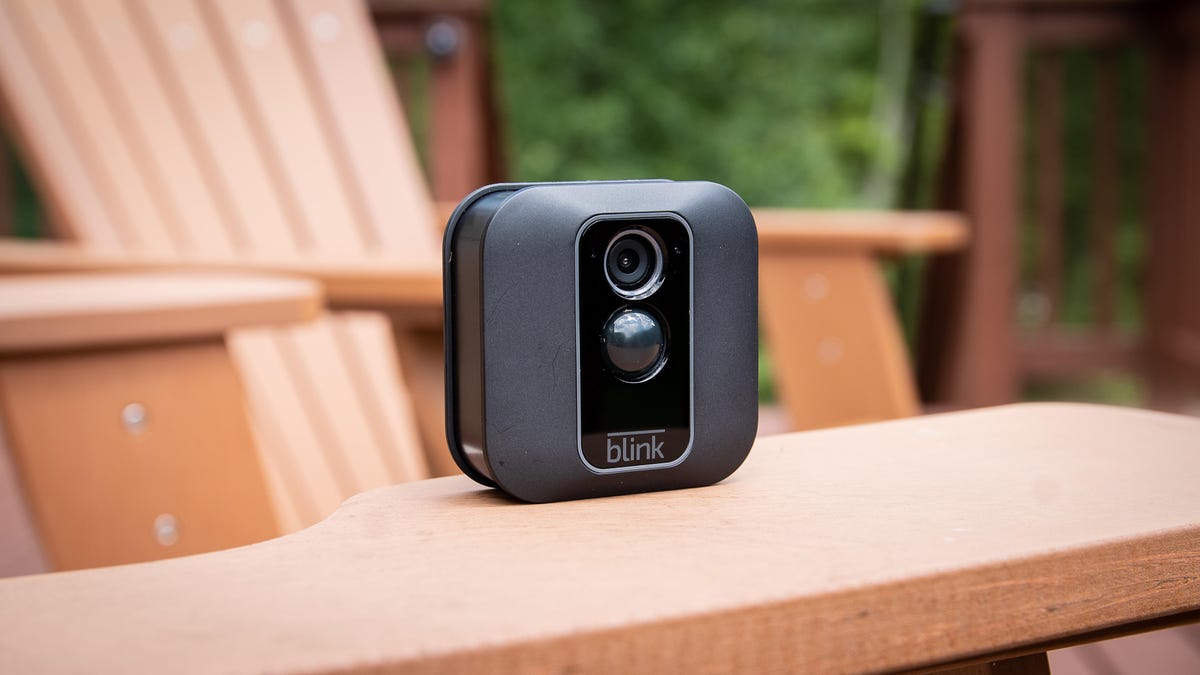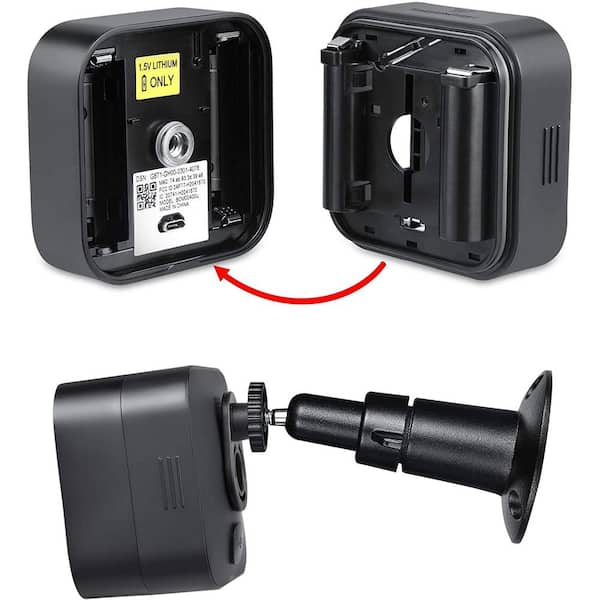Decoding Power Options: What Batteries Do Blink Cameras Use?
Introduction
Understanding which batteries to use for your Blink cameras is key to unlocking their full potential. This comprehensive guide aims to explore the world of Blink cameras' power options by answering 'What batteries do Blink cameras use?' From their significance, the compatible types, how to optimize their performance and lifespan to the implications of their usage and disposal, this article got it all covered. Read on to get the grips with navigating this crucial aspect of your Blink cameras.
What Are Blink Cameras and Their Unique Features?
Blink cameras, in the ownership portfolio of retail giant Amazon, offer an ingenious solution to wireless home security. These surveillance devices deliver high-quality features, making them a popular choice among consumers. Here's a look at the remarkable attributes that make Blink cameras stand out:
- High-Definition Video: They provide crisp, clear, high-definition video recording, ensuring that each recorded detail is clear and visible.
- Infrared Night Vision: Blink cameras come equipped with infrared night vision, allowing crystal clear visibility even in low light or nighttime conditions without missing any movement.
- Motion Detection: These cameras are equipped with advanced motion detection capabilities, alerting you once they sense any odd activity.
- Wire-Free Design: The cameras are wire-free, allowing easy installation and flexible positioning, clearing any cable-related hassle.
- Prolonged Battery Life: The outstanding battery life of up to two years is a remarkable feature of Blink cameras, offering continuous monitoring without the worry of frequent battery replacement.
Each of these attributes works in unison to make Blink cameras an all-round robust security solution.
Why Are Batteries Significant In Blink Cameras' Operation?
Batteries play an integral part in powering the sophisticated technology within Blink Cameras. These wireless surveillance gadgets are heavily dependent on their batteries, crucial to delivering round-the-clock security. Let's dive deeper into the core reasons why these power sources are so significant in Blink Cameras' operation:
1. Power Source: As wireless devices, Blink Cameras require batteries for their primary operation. Without these power sources, the cameras can't capture video, detect motion or perform any of their key functions.
2. Continuous Operation: Quality batteries ensure your Blink Cameras can perform seamlessly without interruption, offering continuous surveillance, be it day or night.
3. Feature Activation: The batteries within a Blink Camera enable all its smart features. This includes HD video recording, motion detection, and even AI capabilities, ultimately delivering superior security results.
4. Installation Flexibility: Owing to their reliance on batteries, Blink Cameras offer flexibility in terms of installation. They can be mounted in inaccessible spots or outdoor locations where wiring would be challenging.

5. Productivity: The batteries used are long-lasting, with the device typically running efficiently on a single set for about two years. The extended lifespan of these power sources minimizes the need for constant replacements, ensuring hassle-free usage.
In essence, the battery within a Blink Camera isn't just a power source; it's the backbone of the device's entire functionality. Proper battery care can significantly enhance the camera's performance, safeguarding homes and businesses with optimum vigilance.
What Types of Batteries Are Compatible With Blink Cameras?
The performance and lifespan of Blink Cameras largely depend on the type of batteries used. For optimum efficiency, it is crucial to understand and pick the correct compatible batteries. Blink Cameras primarily operate on AA lithium batteries, revered for their extended lifespan and stable voltage.
Each kind of Blink camera operates with distinct battery specifications:
- Blink XT and Blink XT2 Cameras: These cameras rely on two AA 1.5V non-rechargeable Lithium batteries. Their prolonged battery life and high performance make them ideal for these camera models that are mainly used in surveillance areas that require extended periods of recording or where a power outlet isn't readily available.
- Blink Indoor Cameras: Similar to the Blink XT and Blink XT2, these cameras too, operate with lithium batteries. However, these models utilize two AA 1.5V Lithium batteries. These are rechargeable batteries, perfect for indoor usage where changing batteries frequently can be a tedious task.
While it might seem feasible to consider alternate battery types such as Alkaline or NiMH batteries due to availability or lower cost factors, it's worth noting that they are not recommended for Blink Cameras. Here's why:
- Alkaline Batteries: Though inexpensive and easily available, Alkaline batteries provide inconsistent voltage, which may interfere with the camera's operation or lead to premature battery exhaustion.
- NiMH Batteries: NiMH (Nickel-Metal Hydride) batteries, though rechargeable, have a lower voltage output compared to Lithium batteries. This inferior power output can affect the performance of your Blink Cameras.
In conclusion, to maintain the peak performance and longevity of your Blink Cameras, adhering to the use of Lithium batteries comes highly recommended. This simple measure will keep your security surveillance efficient, continuous, and hassle-free. Remember, power without longevity is no power at all when it comes to surveillance. Don't compromise the security of your premises with incorrect battery choices.
How Can You Maximize Performance and Lifespan Of These Batteries In Blink Cameras?
Getting the most out of your Blink camera batteries is crucial for sustained performance. Your approach to battery management can significantly influence your camera's longevity and overall efficiency. Here are some expert tips on how to maximize the performance and lifespan of these batteries:
1. Use High-Quality Lithium Batteries: Blink cameras work best with AA Lithium batteries. They provide consistent energy output and longevity compared to Alkaline or NiMH batteries. High-quality lithium batteries are designed to work optimally in various temperature ranges, making them a perfect fit for security cameras.
2. Adjust Camera's Sensitivity Settings: The motion detection feature in Blink cameras can drain batteries if they are tripped frequently. One way to conserve battery life is by adjusting the motion detector's sensitivity settings. Reducing the sensitivity level can decrease the frequency of alerts and corresponding battery drainage.
3. Limit Usage of Live View: Live View is an excellent real-time monitoring feature, but it can significantly consume the battery, especially with high video quality settings. It's best to use Live View sparingly to conserve battery life.
4. Keep Your Camera Firmware Updated: Blink system updates can potentially improve battery efficiency. Ensuring your security camera's firmware is regularly updated reinforces the overall device performance and prolongs battery lifespan.
By following these practices, you can enhance the battery performance of your Blink cameras, ensuring they remain up and running for longer:
- A high-quality Lithium battery ensures you get a reliable power source designed to last up to two years.
- By adjusting the sensitivity level of your camera's motion detectors, you can facilitate less frequent battery drainage.
- Limiting Live View usage helps prolong battery life by reducing unnecessary power consumption.
- Regular firmware updates not only improve device efficiency but can also lead to enhanced battery life.
Through these strategies, you can achieve an optimal balance between functionality and battery conservation for your Blink cameras, reinforcing the efficiency and delivery of your home surveillance system.
What Are The Implications Of Battery Usage And Disposal For Blink Cameras?
Battery usage and disposal in Blink cameras carry several significant implications. This mainly revolves around two facets: the environment and device safety. Unravel these implications, and learn why responsible handling of batteries is more crucial than one might think.
- Environmental Concerns
- Lithium Batteries: Blink cameras utilize lithium batteries. While praised for their energy efficiency and long lifespan, these batteries contain materials that can pose environmental hazards if incorrectly disposed.
- Recycling Measures: Throwing used lithium batteries in regular trash or recycling bins is not advised. Instead, these should be taken to local battery recycling points or e-waste facilities for safer, eco-friendly disposal.
- Device Safety Aspects
- Compatibility: Using batteries not compatible with the specific model can result in inefficient operation and, worse, potential damage to your Blink Cameras.
- Battery Pairing: It's recommended not to mix new and old batteries in a device, as this can lead to poor performance and device issues.
- Usage and Lifespan Impact
- Correct Usage: Proper battery use can significantly extend the lifespan of your Blink Cameras and maintain their optimum performance levels.
- Quality Matters: Always opt for high-quality, recommended lithium batteries for your Blink Cameras to ensure longevity and reliability.
Understanding and respecting these implications can help you get the most out of your Blink Cameras while maintaining a responsible stance towards battery usage and disposal. Embracing these good practices promotes not only efficient surveillance but also environmental sustainability and safety.
Conclusion
Understanding 'What batteries do Blink cameras use?' should no longer be a mystery. Armed with this knowledge, you’re better placed to harness the full potential of your Blink Cameras. Adhere to the correct battery usage, optimize settings for increased longevity, and engage in responsible disposal practices to maintain efficient, constant security surveillance in your home or workspace.
Related FAQs about what batteries do blink cameras use
Why is it essential to use the recommended batteries for Blink Cameras?
Using the recommended batteries is crucial to ensure the optimal performance and longevity of your Blink Cameras. Other types may result in inconsistent energy output, which can interfere with the functions of the camera and lead to premature battery exhaustion.

How often do I need to replace the batteries on my Blink cameras?
The lifespan of batteries in Blink cameras depends on their usage. However, with typical use and the right type of batteries, which are AA Lithium batteries, you can expect them to last up to two years.
Can I use rechargeable batteries in my Blink Cameras?
Blink's indoor cameras can use AA 1.5V rechargeable Lithium batteries, while Blink XT and XT2 cameras work best with non-rechargeable Lithium batteries. Avoid using NiMH rechargeable batteries as they provide lower voltage output, possibly affecting your cameras' performance.


